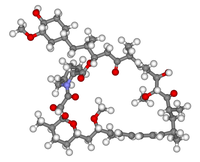
Polycystins as components of large multiprotein complexes of polycystin interactors.
Sign Up to like & getrecommendations! Published in 2020 at "Cellular signalling"
DOI: 10.1016/j.cellsig.2020.109640
Abstract: Naturally occurring mutations in two separate genes, PKD1 and PKD2, are responsible for the vast majority of all cases of autosomal dominant polycystic kidney disease (ADPKD), one of the most common genetic diseases affecting 1… read more here.
Keywords: polycystins components; components large; multiprotein; multiprotein complexes ... See more keywords

Generation of two isogenic knockout PKD2 iPS cell lines, IRFMNi003-A-1 and IRFMNi003-A-2, using CRISPR/Cas9 technology.
Sign Up to like & getrecommendations! Published in 2019 at "Stem cell research"
DOI: 10.1016/j.scr.2019.101667
Abstract: Autosomal dominant polycystic kidney disease (ADPKD) is the most prevalent inherited renal disease, characterized by multiple cysts that can lead to kidney failure resulting in end-stage renal disease. ADPKD is mainly caused by mutations in… read more here.
Keywords: two isogenic; crispr cas9; pkd2; cas9 technology ... See more keywords

Protein kinase D2 regulates epithelial sodium channel activity and aldosterone non-genomic responses in renal cortical collecting duct cells
Sign Up to like & getrecommendations! Published in 2020 at "Steroids"
DOI: 10.1016/j.steroids.2019.108553
Abstract: Protein kinase D2 (PKD2) is a serine/ threonine protein kinase which plays an important role in vesicle fission at the trans-Golgi network (TGN) to coordinate subcellular trafficking with gene expression. We found that in the… read more here.
Keywords: aldosterone; protein kinase; pkd2; collecting duct ... See more keywords

Hydrophobic pore gates regulate ion permeation in polycystic kidney disease 2 and 2L1 channels
Sign Up to like & getrecommendations! Published in 2018 at "Nature Communications"
DOI: 10.1038/s41467-018-04586-x
Abstract: PKD2 and PKD1 genes are mutated in human autosomal dominant polycystic kidney disease. PKD2 can form either a homomeric cation channel or a heteromeric complex with the PKD1 receptor, presumed to respond to ligand(s) and/or… read more here.
Keywords: pkd2; polycystic kidney; gate; kidney disease ... See more keywords

Role of PKD2 in the endoplasmic reticulum calcium homeostasis
Sign Up to like & getrecommendations! Published in 2022 at "Frontiers in Physiology"
DOI: 10.3389/fphys.2022.962571
Abstract: Autosomal dominant polycystic kidney disease (ADPKD) is caused by mutations in the PKD1 or PKD2 gene which encodes membrane receptor PKD1 and cation channel PKD2, respectively. PKD2, also called transient receptor potential polycystin-2 (TRPP2), is… read more here.
Keywords: role pkd2; pkd2; endoplasmic reticulum; homeostasis ... See more keywords

A Novel Role for Polycystin-2 (Pkd2) in P. tetraurelia as a Probable Mg2+ Channel Necessary for Mg2+-Induced Behavior
Sign Up to like & getrecommendations! Published in 2019 at "Genes"
DOI: 10.3390/genes10060455
Abstract: A human ciliopathy gene codes for Polycystin-2 (Pkd2), a non-selective cation channel. Here, the Pkd2 channel was explored in the ciliate Paramecium tetraurelia using combinations of RNA interference, over-expression, and epitope-tagging, in a search for… read more here.
Keywords: polycystin pkd2; pkd2 tetraurelia; channel; mg2 ... See more keywords